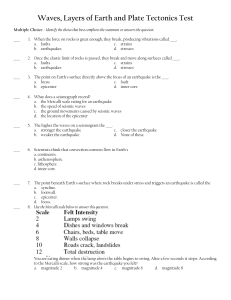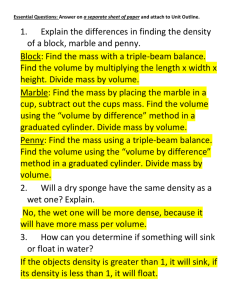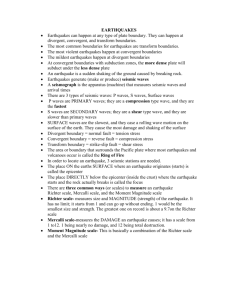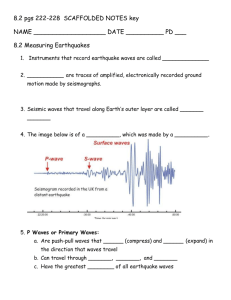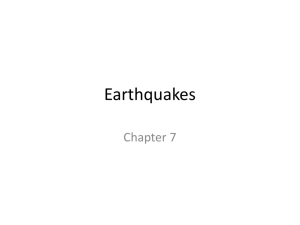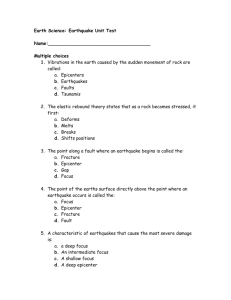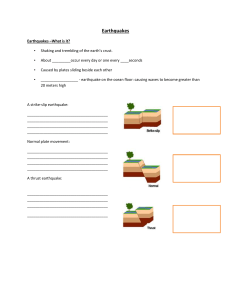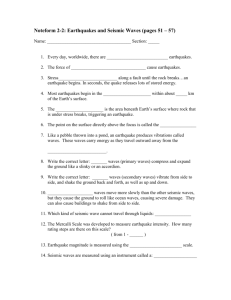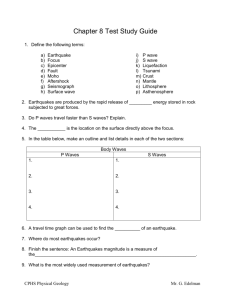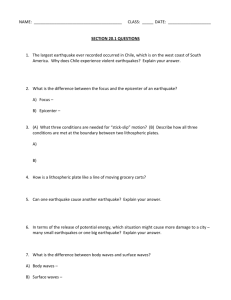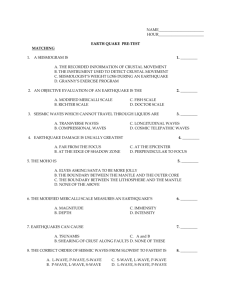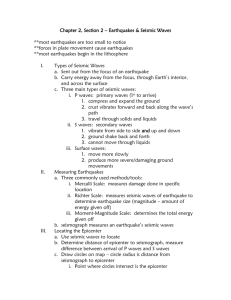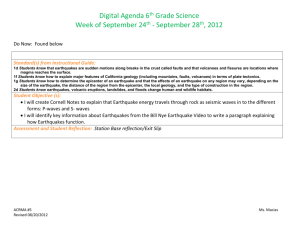Measuring Earthquakes
advertisement
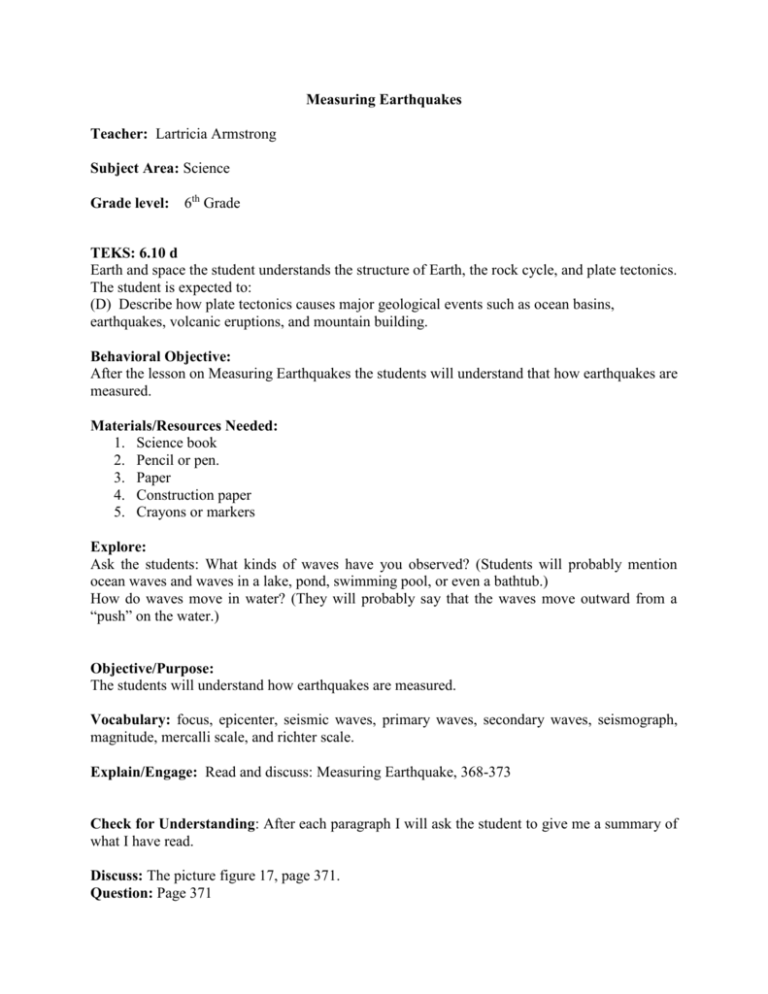
Measuring Earthquakes Teacher: Lartricia Armstrong Subject Area: Science Grade level: 6th Grade TEKS: 6.10 d Earth and space the student understands the structure of Earth, the rock cycle, and plate tectonics. The student is expected to: (D) Describe how plate tectonics causes major geological events such as ocean basins, earthquakes, volcanic eruptions, and mountain building. Behavioral Objective: After the lesson on Measuring Earthquakes the students will understand that how earthquakes are measured. Materials/Resources Needed: 1. Science book 2. Pencil or pen. 3. Paper 4. Construction paper 5. Crayons or markers Explore: Ask the students: What kinds of waves have you observed? (Students will probably mention ocean waves and waves in a lake, pond, swimming pool, or even a bathtub.) How do waves move in water? (They will probably say that the waves move outward from a “push” on the water.) Objective/Purpose: The students will understand how earthquakes are measured. Vocabulary: focus, epicenter, seismic waves, primary waves, secondary waves, seismograph, magnitude, mercalli scale, and richter scale. Explain/Engage: Read and discuss: Measuring Earthquake, 368-373 Check for Understanding: After each paragraph I will ask the student to give me a summary of what I have read. Discuss: The picture figure 17, page 371. Question: Page 371 1. How are the Mercalli Scale and the Richter scale similar? (Both describe the “strength” of an earthquake.) 2. How are they different? (The Mercalli scale describes an earthquake’s strength in terms of its effects-to what extent people notice it and the amount of damage it causes. The Richter scale describes an earthquake’s strength in terms of the size of its seismic waves; it is a precise measurement.) 3. On which scale would an earthquake’s strength vary from one place to another, and why? ( The Mercalli scale; the amount of shaking that people would feel and the damage to objects would feel and the damage to objects would be greater in a place closer to the quake’s epicenter and less in a place farther away, so the intensity ratings in the two places would be different.) Independent Practice: The students will make Foldable; they will definition, and draw p-waves and s-waves.






